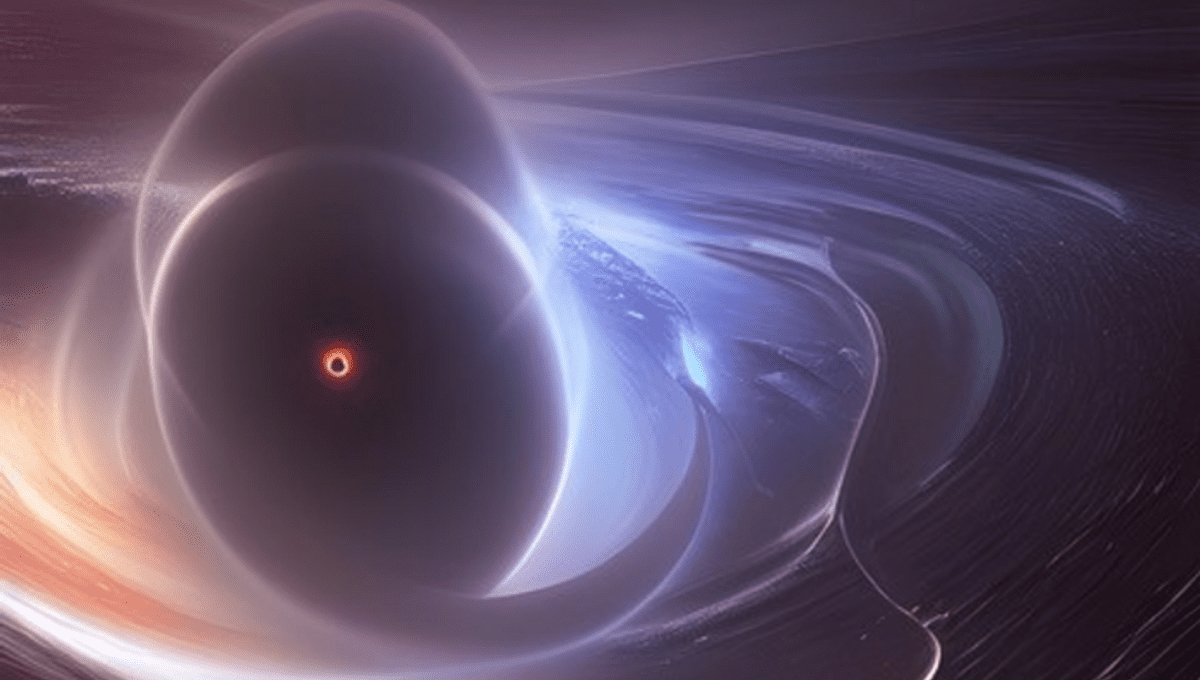
A team modeling the behavior of black holes has come to the conclusion the masses of the universe’s densest objects are quantized, similar to the way electrons orbiting atoms can only have specific energies. Moreover, just as particles can simultaneously be in multiple places at once, known as superposition, the authors of a new paper claim black holes can have two masses, being simultaneously a combination of a probability of each mass. If you’re struggling to grasp these concepts don’t worry too much, even the authors of a paper admit it wasn’t what they expected.
“We all know e=mc2,” Dr Magdalena Zych of the University of Queensland told IFLScience. “If we look at how atoms are formed from elementary particles summing the mass of the nucleons does not give the total mass of the atom. The atom’s mass also includes some binding energy, and that energy is quantized.” This means the mass of the atom cannot be any value because there are only certain amounts the binding energy can be.
Being made up of atoms, macroscopic objects like ourselves are also limited to specific masses. “For macroscopic objects like us the difference is so tiny it is irrelevant,” Zych said, but that may not be the case for black holes. In particular, the impossible masses might be quite important during their formation and when they evaporate due to Hawking Radiation.
The team reached the conclusion by considering the behavior of a particle outside a black hole and considering how it would interact with the black hole’s gravitational force without violating known laws. However, it’s a long way to the nearest black hole to actually conduct a test.
The fact that certain black hole masses may be disallowed may be something non-physicists don’t find too hard to swallow, but the other aspect to this work is something else. “Imagine you’re both broad and tall, as well as short and skinny at the same time – it’s a situation which is intuitively confusing since we’re anchored in the world of traditional physics,” said first author PhD student Joshua Foo in a statement. Yet if the team is right, it’s true for black holes, just as Schrödinger’s cat can be simultaneously alive and dead.
“The universe is revealing to us that it’s always more strange, mysterious and fascinating than most of us could have ever imagined,” Zych said.
What the team doesn’t yet know, Zych told IFLScience, is whether superpositions would involve masses so similar to each other they would make no difference outside idealized conditions, or if large differences are possible.
Zych acknowledged the work is just mathematical modeling at this stage and will be hard to test. “The next step is to look into the implications for black holes we are studying,” Zych said, whether those be relatively nearby, or the supermassive black holes at the heart of other galaxies.
If the work stands up to wider scrutiny, it could shape the search for quantum gravity, the effort to unite the two great theories of the 20th century, General Relativity and Quantum Mechanics. “If so, any model of quantum gravity would have a very tight restriction,” Zych told IFLScience, “Particularly in the final stages of evaporation. It’s one of the most mind-bending projects.”
The study is published in Physical Review Letters
Source Link: Black Holes Can Apparently Have Two Different Masses At Once